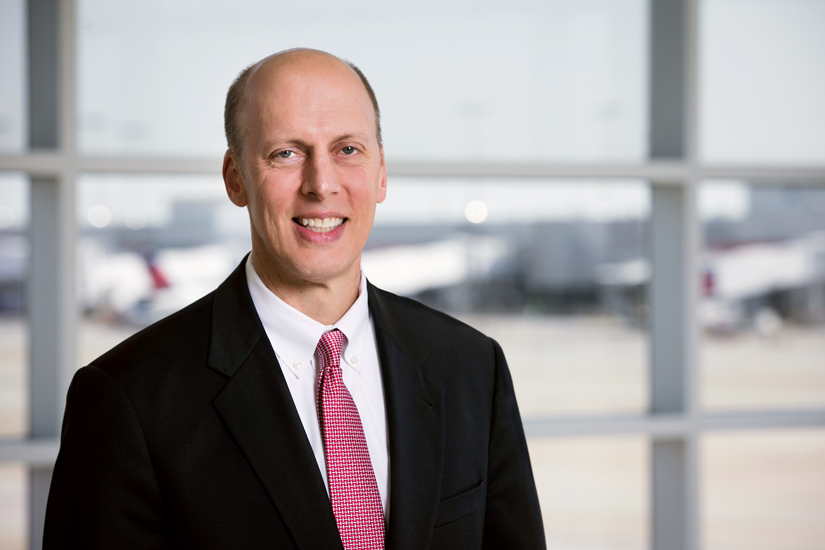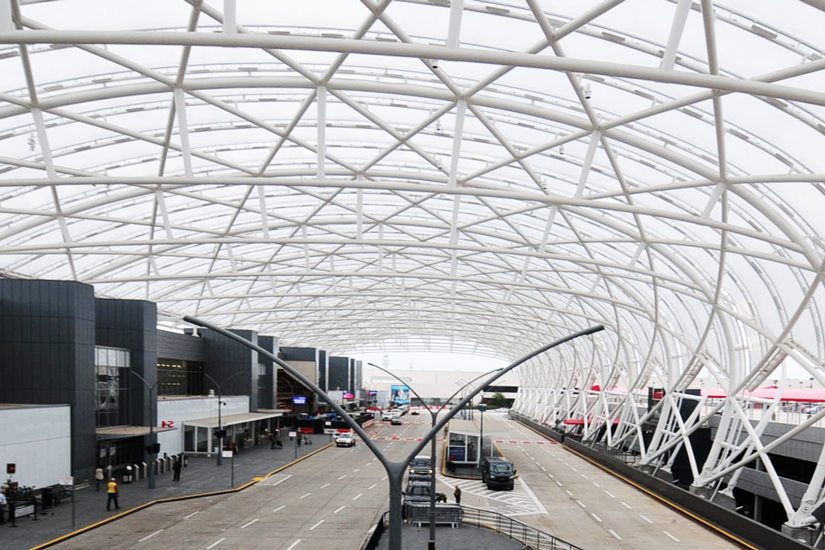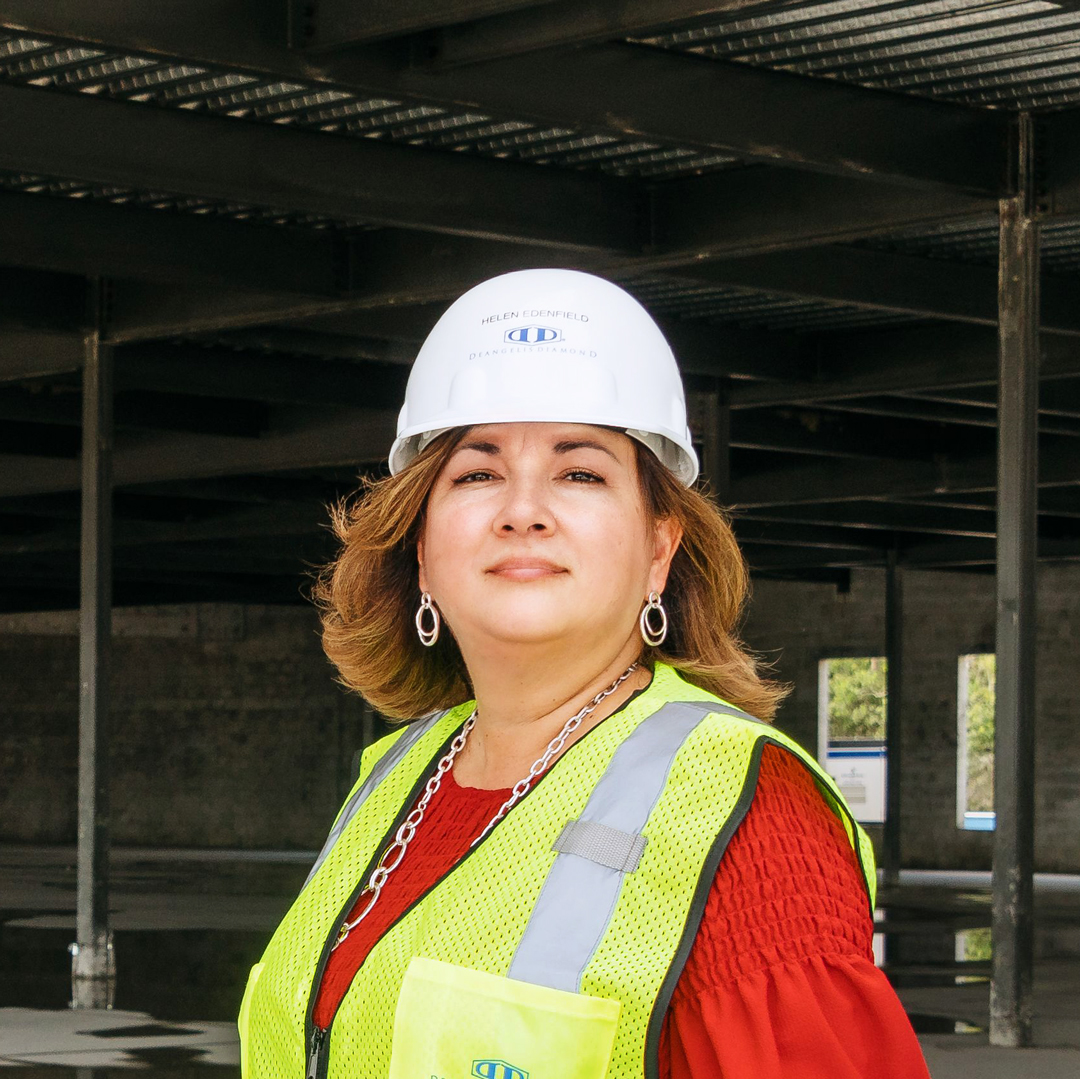|
|
Over Labor Day weekend in 2019, some 85,000 passengers passed through Hartsfield-Jackson Atlanta International Airport, eager for one last summer getaway or gearing up for the busy fall quarter in their careers. Just one year later, in the wake of the COVID-19 pandemic, the number of travelers dropped by more than half. Such a dramatic downturn in demand is unusual, but when you have responsibility over design and construction for the world’s busiest airport, you have to expect the unexpected. “When planning and designing airport projects, conditions change frequently,” explains Tom Nissalke, the airport’s assistant general manager of planning and development. Nissalke is responsible for keeping abreast of these changes and devising solutions to resulting problems.
“You’ve got to be ready to react to a changing environment,” he says. “Whenever we do something, we have to keep that in mind.”

That was certainly the case in 2020, a year that had $600 million in projects on the docket. Much of that work did continue despite a drop-off in average daily takeoffs and landings from about 2,700 to 1,500 year over year. Airport officials looked ahead to better days as they moved ahead with projects to improve comfort and convenience for travelers.
The drastically reduced level of business prompted some alterations, though, including an adjustment to the airport’s master plan for parking. While a parking structure project to add 5,700 parking stalls was nearing completion as the pandemic hit, a plan to greatly expand two existing parking structures was shelved. With plenty of unused parking in this garage, airport management saw no need for the expansion, and repurposed part of the structure for airport employee parking. “Even though the parking rate was reduced for employees, at least there is some revenue coming in,” Nissalke says.
Over the previous few years prior to the pandemic, the growing use of transportation network company (TNC) services such as Uber and Lyft had a dramatic impact on ground transportation infrastructure. At first, drivers for these services were allowed to pick up and drop off passengers at terminal curbside. As the Uber and Lyft volume increased, the terminal roadways became too congested, causing delays and safety concerns.

In response, Hartsfield-Jackson created two dedicated TNC pickup areas in economy parking lots. Though this arrangement meant that passengers catching a TNC had to walk farther to get to their rides, a redesign of the space created some benefits. “Implementing these two pick up locations provided a more orderly flow of traffic,” Nissalke says.
Hartsfield-Jackson is now in the process of combining these two pick up locations into a single one. With this single location and lessons learned from operating the two previous locations, a more efficient operation will result. At first, drivers had to pull a parking ticket and go through exit gates like any passenger parking in the lot. The redesign allocates a closed space within the lot for exclusive TNC use. Drivers no longer will pull tickets or stop at the exit plaza.
Nissalke and his team will have to keep monitoring the volume of TNC use, how ridership rates impact the operation of the TNC lot, and passenger preferences regarding ground transportation as the pandemic subsides. “A big question is, ‘Will people continue to park at the airport as much as they once did?’” the assistant general manager says.
Nissalke and the development team glean critical planning data by observation, statistics such as passenger volume, and through communication with the airport’s multiple stakeholders. For ground transportation, this includes the airport’s ground transportation management staff, local TNC representatives, who have the most accurate ridership data, mass transit officials, and other providers of ground transportation such as limousine companies and taxis. Indeed, the development team must balance the interests of multiple constituencies when proposing new projects.

For instance, design of recent terminal upgrades was preceded by lengthy discussions with the airlines serving Hartsfield-Jackson. Both parties had to come to an agreement on what to renovate and when. They approved the first exterior renovation on the domestic terminal since it opened 40 years ago.
This included construction of two canopies to cover the roadway lanes to protect passengers from inclement weather. To refresh the look of the exterior, concrete panels were removed and replaced with colored glass. This brightened the interior and modernized the building’s aesthetics. Ceilings at gate waiting areas were raised, enabling more windows to be added to these areas. The result was a brighter, airier building. Details such as new signage, upgraded LED lighting, and dressed-up columns added impact to the renovation.
A renovation project like that doesn’t boost revenue for the airport or its tenants, so it’s no surprise it took four decades to be realized. But, Nissalke points out, it reflects one of the airport’s goals: to provide a pleasant passenger experience. Most projects are funded by a combination of airline fees, passenger fees, and government sources. Stakeholders have to agree on how to allocate these dollars. It can be tricky to balance the needs and wants of all parties.

“My role is providing support and information,” Nissalke says. The airport’s general manager and chief financial officer handle most of the discussions and negotiations. Nissalke and his team provide the numbers and various options of what structures to build or renovate and how to construct them. It’s critical to get the numbers right in this analysis, and when conditions change, to quickly adjust to new realities.
Nissalke’s other essential task is to coordinate construction work. “Project phasing is a big challenge,” Nissalke says. “You always want to minimize impacts on operations.” Scheduling work overnight or during off-peak weeks and slower travel days as much as possible is a must.
Project scheduling and phasing is a huge responsibility, with thousands of passengers each day depending on Nissalke’s team planning to avoid drastic delays. Indeed, the stakes are higher for design and construction professionals working in a mission-critical environment like a major airport. The work tries one’s mettle, but also offers great professional satisfaction for jobs well done.


